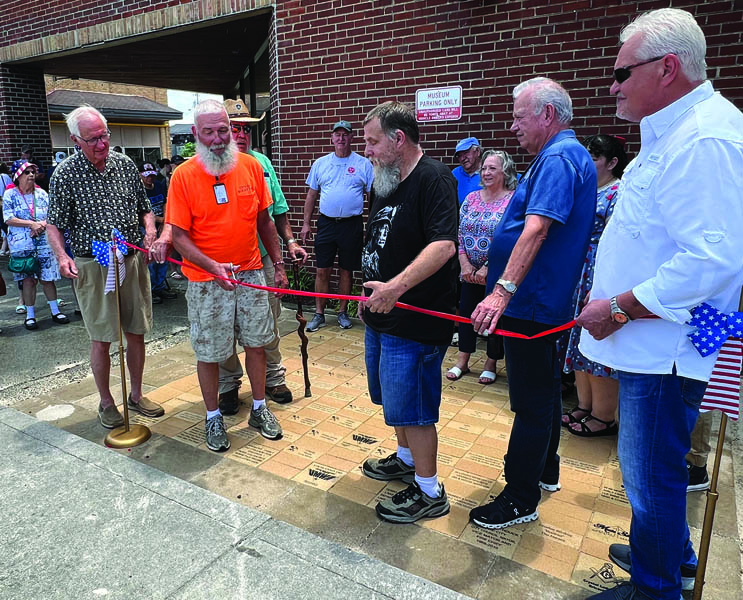Coal Creek Miners Museum shows off new brick walkway
A crowd turned out on Independence Day to get a first look at the new Memorial Brick Walkway in front of the Coal Creek Miners Museum in Rocky Top, and participate in a ribbon-cutting event celebrating the completion of the walkway.
It’s inlaid with bricks bought by donors to the museum, most of the bricks engraved with the names of former Coal Creek-area miners and family members – with one theme in mind: memorializing those who lost their lives in two major mining disasters in the area in the early 1900s.
Rocky Top Mayor Kerry Templin was on hand to cut the ribbon as spectators looked on, including United Mine Workers officials and descendants of Coal Creek miners.
Construction of the walkway was the result of a fund-raising campaign the museum began last fall to pay for upgrades, including a new second floor of exhibits.
Museum officials said at Thursday’s event that the second floor has not yet been opened to visitors, but could be within the next few months.
In December, the museum was notified that it had been awarded a $50,000 grant from the state of Tennessee to help with the expansion.
The money from the state, awarded through a program of the Tennessee State Museum, has allowed the museum to add heating and air conditioning, along with ADA-compliant restrooms, to the second floor, according to an announcement by the state museum.
An elevator was also installed to give disabled people access to the second floor.
In October, the museum began selling the bricks to raise money for the additions and improvements.
Located in a former bank building next to City Hall in downtown Rocky Top, the museum is dedicated to preserving and celebrating the history of coal mining in the Coal Creek area, with emphasis on the industry’s impact on the region, and the tragedies that resulted in the deaths of hundreds of miners.
Volunteer curator Lisa Pebley said the second floor will be used to chronicle the local coal industry from the 1940s until its end in the early 2000s.
The main floor, which has been open for several years, details the industry’s impact from its beginning in the 1800s when Henry Howard Wiley brought Welsh miners in to start mining in the area, through the war years
in the 1940s, Pebley
said.
The former bank vault on the main floor holds exhibits telling the story of the Fraterville mine explosion on May 19, 1902, which resulted
in the deaths of 216 miners.
Bricks paid for by donors have been printed with information each one provided.
The bricks cost $100, $200, or $300 each, depending on the size and the amount of text the donor chose.
“By participating in this project, individuals and organizations have the opportunity to contribute to the museum’s financial sustainability while leaving a lasting legacy in honor of a coal miner, a community member and/or a business partner,” a campaign flyer read.
“By selling personalized bricks, the museum aims to engage the local community, former coal miners, their families, and individuals passionate about preserving the history of coal mining,” it added.


